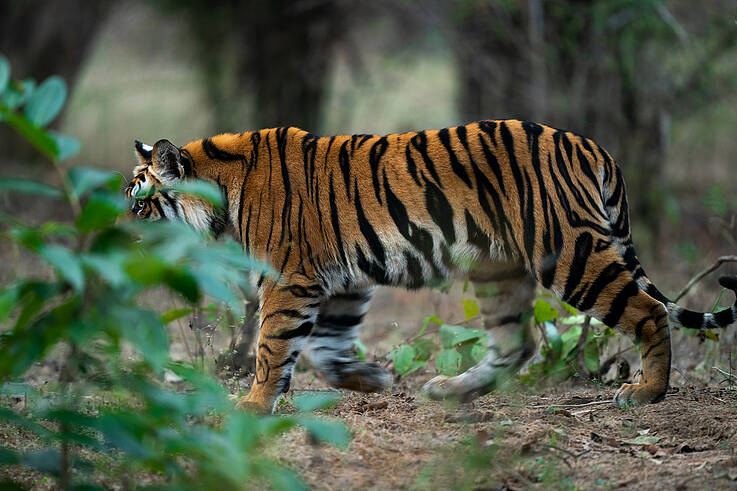The WWF is run at a local level by the following offices...
- WWF Global
- Adria
- Argentina
- Armenia
- AsiaPacific
- Australia
- Austria
- Azerbaijan
- Belgium
- Bhutan
- Bolivia
- Borneo
- Brazil
- Bulgaria
- Cambodia
- Cameroon
- Canada
- Caucasus
- Central African Republic
- Central America
- Chile
- China
- Colombia
- Croatia
- Democratic Republic of the Congo
- Denmark
- Ecuador
- European Policy Office
- Finland
Tigers are fascinating animals, from their unique stripe patterns to their almighty roar they represent strength and power all while being the most endangered big cat in the world.
Here are our 10 top facts about tigers…

1. Tiger stripes are unique.
Like the human fingerprint, each tiger’s stripe pattern is one of a kind. Individual tigers are identified by their unique stripes and counted using camera trap images to estimate population numbers, this could be in a protected area or on a bigger scale for a country population estimate.

2. Tigers can use their ears to communicate.
A tigress uses the white spots on the back of her ears to communicate with her cubs. They act as a flasher to the cubs, when a tigress senses danger she flattens her ears and the cubs respond by crouching down and hiding.

3. India has over half the world’s population of tigers.
This makes counting them quite a logistical challenge! In 2018 India’s national tiger survey made it into the Guinness Book of World Records for being the largest camera trap exercise in the world.

4. One meal a week.
For tigers only one in ten hunts are successful; a large deer can provide a tiger with one week's food.

5. The vocal repertoire of tigers is vast.
They grunt, growl, roar, moan, snarl, chuff, hiss and gasp. It's thought that each vocalisation is used to communicate different things.

6. Tigers have been around for over 2 million years.
While tigers have been around longer than humans, the impacts of human development have caused their population to decline by 97% since the start of the last century.

7. Tigers are endangered.
Because tiger populations have declined so significantly they’re listed as ‘endangered’ by the International Union for Conservation of Nature. This means they are considered to be facing a very high risk of extinction in the wild.

8. On average two tigers are seized from traffickers every week.
Despite an increase in tiger populations, they remain under threat from the illegal wildlife trade. The number in trade will be much higher than the estimation of approximately 2 tigers seized a week, as this is based on what is seized and reported.
WWF is calling for governments to enforce clear bans on trade in tigers and their parts and products from any source, wild or captive.

9. There are more tigers in captivity than there are in the wild.
There are 3,900 tigers in the wild and both China and the US each have over an estimated 5,000 tigers in captivity.
Globally, there are some legitimate conservation breeding programmes for tigers, and where appropriately managed captive tigers could be used to re-establish wild populations in the future. However, many tiger farms across Asia profit from putting their tigers and their parts and products into trade. Not only does this undermine law enforcement efforts, but it perpetuates and even stimulates demand that also drives the poaching of wild tigers.

10. The TX2 goal is the most ambitious conservation commitment for a single species.
WWF has been working to protect tigers across Asia and for the first time in over 100 years tiger populations were reported to increase in some areas in 2016. 2022 marks the year tiger range countries will assess their progress towards the TX2 goal and to see if wild tiger numbers have been doubled.
But the work is not over. Tigers are still under threat and their populations in Southeast Asia are declining.
Do you want to do more to help protect this iconic big cat? You can donate towards WWF’s tiger conservation work here 👉 https://lp.panda.org/year-of-the-tiger